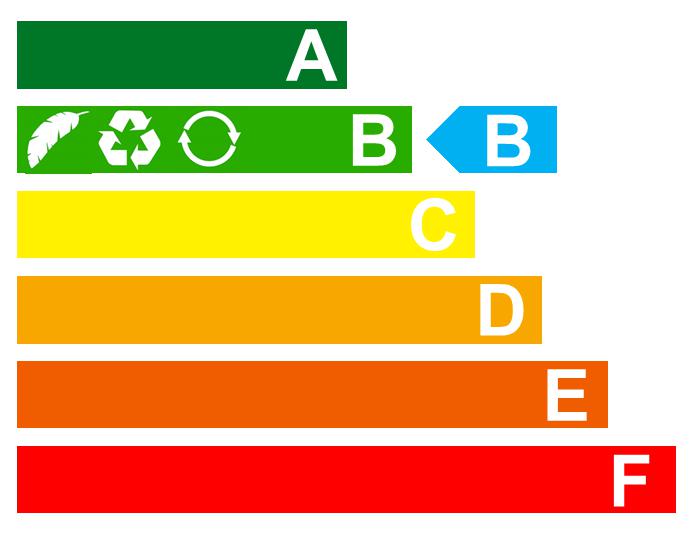The existing wage systems in modern enterprises are very diverse and sometimes significantly different. The main goal of any wage system is to stimulate the employee to a better and more productive work. To this end, various systems and forms of remuneration have been developed both by domestic economists and foreign. In the framework of this article, we will consider one of the most popular wage systems at the present time - wage based on grades.
Essence
Consider the concept of grades in remuneration and what it is in more detail. This will be discussed in the article below.
The use of a grading system in remuneration implies taking into account the specific results of the employees' labor activity, depending on their profession. Various factors relating to a particular employee are also taken into account: length of service, behavior and communication culture, discipline in the workforce, compliance with standards and regulations, final qualifications, even appearance. All these factors and moments can influence the final calculation of wages when applying a system based on grades.
What are grades in remuneration? This is a word that comes from an English grade, which means “class” or “degree”.
This system can be represented in the form of a built rank table, in which all employees are located in a special order. Each employee is assigned an individual rank, which has the most direct impact on salary at the end of the reporting month. Thus, it is this system that makes it possible to form the system of payments and remuneration for employees in the most correct way. This system is convenient for the employee in that it is clear and simple. It is transparent, since each employee understands well what exactly he needs to do to increase his salary in the next period.

Application possibilities
Since this system of grades in remuneration is innovative, the possibilities of its application are only assimilated in our country. However, the leadership of many companies has already realized all the advantages of this system and is actively introducing it among employees. She is becoming more and more popular. But there is a limitation on the implementation of the system: its high cost, so small companies almost never or rarely use it. If the company has less than 50 employees, then it makes no sense to implement a system.
Grading system is more suitable and optimal for medium and large companies. It is difficult enough for implementation and application; staffing is required. However, in reality it justifies itself, as it provides excellent opportunities to correctly calculate the remuneration of labor for all employees without errors and inaccuracies.
Grades in remuneration, advantages and disadvantages will be discussed below.
Positive sides
Of course, this system has many advantages. Grades in remuneration, according to employers, have the following advantages:
- the amount of the award of each employee is directly dependent on the efficiency of his work at the workplace;
- it is easy to develop a personnel strategy for the development of company personnel and individual specialists, as well as provide growth opportunities for company employees;
- the presence of a relationship between the level of responsibility of an employee of the company and his work results;
- the organizational structure of the company is becoming more rational;
- the system provides significant assistance in managing the payroll, and bonus makes it more flexible;
- payroll efficiency increases up to 30%;
- the wage imbalance in the company is reduced, since the lazy and useless employees are eliminated during the application, while the role of employees who really put their energy into the organization is increased and evaluated;
- easy to analyze the structure of wages in terms of fixed and variable shares;
- there is an opportunity to compare the salary of the company with the industry average;
- inefficiencies in the company are reduced, as duplication of functions and poor leadership are eliminated;
- the issue of accruals and bonuses to employees is easily solved.
Indexing of wages is also simplified. According to the reviews of the majority of company employees, grades in remuneration of labor allow them to show their best professionally and receive appropriate remuneration for this.

Negative sides
You can highlight the negative aspects of the implementation of this system:
- high costs of creating a system and ensuring its functioning;
- the need to attract experts to establish a rating scale;
- there is a risk of subjectivity in the initial assessment of the introduction of grading.
rules
When using a grading-based wage system, the following basic rules apply:
- drawing up a questionnaire listing all the employees of the company is the initial stage;
- depending on the position and specialty, special individual indicators are set, which will later be used as evaluation criteria in calculating the employee's remuneration within the framework of his profession;
- determines the size of the maximum and minimum points that this employee scored within the framework of his workplace;
- The obtained points are grouped and divided into certain intervals, and each of these intervals is already tied to a specific grade;
- at the final stage, you can set the salary level taking into account the data and parameters identified above.
Features and differences of the system
Sometimes the grading system is compared with the tariff. There may be similarities, but there are differences. Consider these points in more detail.
The general characteristic is that both there and there there is a hierarchical structure of posts, inside which salaries (grades) are built on the principle of increase.

However, we note a number of differences, which are presented in the form of a table below.
| Tariff system | The system of grades in remuneration |
| It is based on the assessment of existing professional knowledge, skills and experience | A wide range of criteria includes such parameters as: communication, complexity of work, independence, errors, etc. |
| The principle of growth in the construction of posts | Perhaps the intersection of parts of close grades |
| The structure of the tariff grid is hierarchical in nature, it is based on the minimum wage, which is further multiplied by the developed coefficients | Grade structure is based on the weight of the position, calculated in points |
| The increase in posts is vertical | Posting is related to the principle of importance in the company |
The maximum number of points set is 10.
Among the possible criteria that are used to evaluate employees, one can offer such as experience, skills, knowledge, work skills, responsible attitude to work, achievement of results, attentiveness, etc.
The amount of remuneration can be determined by the following rules:
- 1-10 points assigned 1 grade;
- 11-20 points assigned 2 grades;
- 21-30 points assigned 3 grades;
However, it should be noted that the indicator and level of remuneration of different employees (for example, a loader and a department head) are different. This means that the amount of remuneration received for grades is also different, it is set in accordance with market realities.

For example, if we are talking about technical personnel, then this size varies from 10 thousand rubles. up to 12 thousand rubles.And if we are talking about the head of the department, then the scope will be 25-30 thousand rubles.
By such a ranking, several groups of company employees can be distinguished:
- Group A - professional employees who are very highly valued in the company due to their skills. These are, as a rule, managers, innovative workers, innovators and generators of ideas and innovations.
- Group B - it includes fairly experienced specialists who are at an average level. These are usually “sales people”, managers, partner employees, advertisers, etc.
- Group C occupies the bulk of the staff, these are ordinary ordinary workers. However, among them, as a rule, there are many employees with high potential who are capable of developing in their professional sphere, therefore they always have options for increasing and increasing their salaries.
- Grade D is associated with a minimum level of responsibility. This, as a rule, is maintenance staff who do not require any special knowledge and skills.
This classification is most common. On what category of employee the employee is in depends on the size of his payment.
Methodology of wage formation using grades
Below we present material on the formation of grades in remuneration by the example of the calculation of a particular company.

Stage 1: identification of key factors.
Take 6 criteria:
- management of subordinates and their quantity;
- Does the position affect the final financial result of the company, that is, profit;
- ability to independent decisions;
- the need for work experience;
- qualification level for the position held;
- the presence of connections from the outside.
Stage 2: select individual sub-items for each factor.
| Employee management | |
| A | lack of subordinates |
| B | subordinates are absent, but from time to time consultation is necessary |
| C | among subordinates 2-3 people |
| D | among subordinates: group |
| E | subordinate to the whole department |
| F | subordinate to several departments or branch |
| Degree of responsibility | |
| A | fulfillment of only his duties |
| B | work affects the profit of the company, but the manager always controls this process |
| C | work is directly related to the company's results |
| D | decisions taken affect firm revenue |
| E | responsibility for the results of a group of subordinates |
| F | responsibility for the results of several departments |
| Work independence | |
| A | lack of decision making |
| B | guided by instructions |
| C | prepares decisions for approval by superiors |
| D | the employee receives the goal and decides it himself |
| E | the employee himself sets the goal and decides it himself |
| F | employee sets the strategy of the company as a whole |
| Specialty experience | |
| A | missing |
| B | present but in a different area |
| C | 1-2 years |
| D | over 3 years |
| E | over 3 years of experience in other areas too |
| F | have both experience and skills by profession |
| Education and qualifications | |
| A | the average |
| B | higher, you can not profile |
| C | higher in profile, but without practice |
| D | higher profile, additional knowledge |
| E | academic degree |
| F | two or more educations on a profile, practical skills |
| External links | |
| A | are absent |
| B | for work |
| C | negotiations with partners |
| D | communication with the management of other companies |
| E | deep connections with the management of other companies |
| F | with dignitaries |
Step 3. Now you need to assign points to each position. Since we have 6 letters in each category, we will give marks from 1 to 6.
Grade rating:
- A-1.
- B-2.
- C-3.
- D-4.
- E-5.
- F-6.
Stage 4: further we carry out an assessment by posts and put down points for each item on a 5-point scale.
| Factor | A | B | C | D | E | F | The value of each criterion | Total score |
| Employee management | 3 points | 4 | 12 points | |||||
| Degree of responsibility | 4 points | 5 | 20 points | |||||
| Work independence | 3 points | 5 | 15 points | |||||
| Specialty experience | 4 points | 5 | 20 points | |||||
| Education and qualifications | 4 points | 5 | 20 points | |||||
| External links | 2 points | 2 | 4 points |
The total score is 91 points.
| Factor | A | B | D | E | F | The value of each criterion | Total score | |
| Employee management | 5 points | 5 | 25 points | |||||
| Degree of responsibility | 5 points | 5 | 25 points | |||||
| Work independence | 4 points | 5 | 20 points | |||||
| Specialty experience | 6 points | 5 | 30 points | |||||
| Education and qualifications | 6 points | 5 | 30 points | |||||
| External links | 5 points | 5 | 25 points |
The total post score is 155 points.
| Factor | A | B | C | D | E | F | Criterion Value | Total score |
| Employee management | 2 points | 5 | 10 points | |||||
| Degree of responsibility | 3 points | 4 | 12 points | |||||
| Work independence | 3 points | 5 | 15 points | |||||
| Specialty experience | 4 points | 4 | 16 points | |||||
| Education and qualifications | 3 points | 5 | 15 points | |||||
| External links | 5 points | 5 | 15 points |
The total score for the post is 83 points.
| Factor | BUT | AT | WITH | D | E | F | The value of each criterion | Total score |
| Employee management | 4 points | 4 | 16 points | |||||
| Degree of responsibility | 4 points | 4 | 16 points | |||||
| Independence | 4 points | 5 | 16 points | |||||
| Specialty experience | 4 points | 4 | 16 points | |||||
| Education and qualifications | 4 points | 5 | 16 points | |||||
| External links | 4 points | 5 | 16 points |
The total post score is 96 points.
| Research Factor | BUT | AT | WITH | D | E | F | The value of each criterion | Total score |
| Employee management | 2 points | 3 | 6 points | |||||
| Degree of responsibility | 3 points | 3 | 9 points | |||||
| Independence | 3 points | 4 | 12 points | |||||
| Work experience | 4 points | 3 | 12 points | |||||
| Availability of education | 3 points | 3 | 15 points | |||||
| External links | 2 points | 3 | 8 points |
The total score for the position is 62 points.
Step 5. Next, you need to distribute the points by grade. Usually emit 10 grades.
| Grade | Score |
| 1 | 8-25 |
| 2 | 26-40 |
| 3 | 41-65 |
| 4 | 66-85 |
| 5 | 86-100 |
| 6 | 101-125 |
| 7 | 126-160 |
| 8 | 161-180 |
| 9 | 181-200 |
| 10 | over 200 |
Step 6. Categorization of posts.
| Divisions | Staff | Position |
| Administration | Managerial | CEO |
| Bookkeeping | Employees | Chief Accountant |
| Logistics Department | Specialists | Logistician |
| Sales department | Shopping | Sales manager |
| Service department | Attendants | Service worker |
Stage 7. Establishment of official salaries and forks.
The table of grades in remuneration and an example of the calculations are presented below.
| Grade No. | Number of points | Divisions | Position | Category | Minimum salary, thousand rubles | Average salary, thousand rubles | Maximum salary, thousand rubles | Premium,% |
| 1 | from 8 to 25 | |||||||
| 2 | from 26 to 40 | |||||||
| 3 | from 41 to 65 | service department | service worker | serving | 19 | 20 | 21 | 20 |
| 4 | from 66 to 85 | sales department | sales manager | trading | 29 | 30 | 32 | 25 |
| 5 | from 86 to 100 | accounting | Chief Accountant | employees | 38 | 40 | 42 | 35 |
| logistics Department | logistician | employees | 33 | 35 | 37 | 35 | ||
| 6 | from 101 to 125 | |||||||
| 7 | from 126 to 160 | administration | CEO | managers | 48 | 50 | 53 | 40 |
| 8 | from 161 to 180 | |||||||
| 9 | from 181 to 200 | |||||||
| 10 | from 201 and above |
Thus, a grading system was developed for the company.
Grading system at Rosneft

Rosneft is one of the largest Russian oil and gas companies today with huge volumes of revenue and profits. When determining grades in wages, Rosneft takes into account the following factors:
- qualification;
- the level of education;
- number of shifts per month;
- quality of work performed;
- employee discipline
Further calculations are performed according to the above-described standard scheme.
An analysis of the possibilities of using the grading system at Rosneft in recent years has revealed the following points:
- growth in the number of employees who have a surcharge for professionalism;
- an increase in the average wage for managers, specialists and employees by an average of 2%;
- the growth of labor remuneration in working specialties amounted to 5% per year;
- a drop in the share of bonuses in the wages of workers and engineers from 52% to 40% with an increase in part of the tariff.
Grading system on the example of Sberbank
The system of grades in remuneration in Sberbank has been introduced for a long time instead of the old Soviet tariff system. Within such a system, every employee, even without a career advancement, can receive an increase in salary by increasing the grade. It turns out that within one position of an employee there are several more steps for growth.Under this system, among employees, the salary is approximately 50% of the salary. Everything else is a quarterly, monthly, annual employee bonus. The size of each of these bonuses is affected by the rating of the immediate supervisor.
Grading system at Rosatom
Pay grades at Rosatom have also been introduced for a long time and productively.
The main criteria in the development of grades are: the role, place, value and content of the employee's position in the organizational structure. The assessment is carried out with the involvement of a commission of experts.
The company has 18 grades, and Grade 1 is the highest and belongs to the CEO. Within each grade there is also a distribution by zones A, B, C. Distribution is carried out according to the principle of priority of posts.

Final word
In modern conditions, the grading system is innovative for remuneration. It appeared relatively recently in Russian conditions. However, many companies have already managed to assess the effectiveness of its implementation.
A big plus of such a system is the ability to correctly and rationally calculate and determine earnings for an employee of a particular profession. Grading provides an increased level of motivation for employees, stimulates them to personal and professional growth, and as a result - to achieve new heights by the organization itself.
